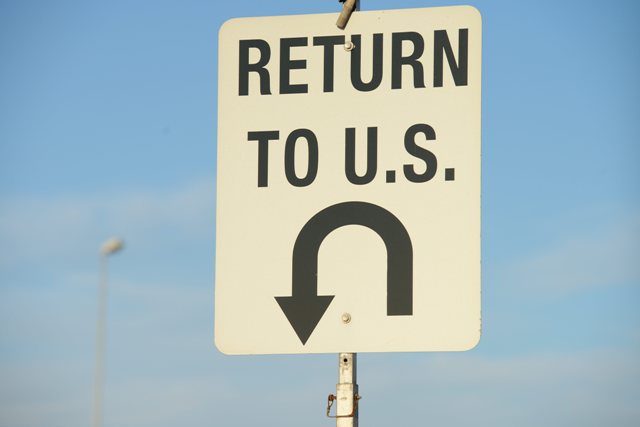OTTAWA – The United States was the number one source of unauthorized foreign workers in Canada last year, at least of those who were caught.

Statistics from the Canada Border Services Agency show 54 Americans were found working without authorization in 2012. The U.S. was also the top source country of foreign workers in general in 2011, the last year such statistics were available.
The Philippines ranked second when it came to the number of foreign nationals reported working without authorizations, with 36 people from the country apprehended by CBSA last year. Filipinos were the sixth largest group of foreign workers in Canada a year earlier.
While it was on the 25 on the list of sending countries in terms of foreign workers, Israel came in at the number three spot with 33 of its nationals found working in Canada without the proper paperwork.
Other countries represented by high numbers on the list of apprehended foreign workers include India (22), Ireland (19), Mexico (19), and China (15).
The trends likely reflect visa requirements and general migration patterns, according to Luin Goldring, a sociology professor at York University and the director of The Ontario Metropolis Centre, which researches the resettlement of immigrants and refugees.
“Israeli passport holders don’t need a visa to enter Canada nor do Americans or permanent residents. If you are thinking about who is most likely to overstay a tourist visa it would be people without a special visa,” she said.
Workers apprehended from The Philippines, Mexico or China may be a reflection of immigration flows in general, especially flows of temporary workers.
“If you have people coming in as live-in caregivers and in other temporary worker categories there is a pathway to falling out of status that is just part of being a temporary resident here. Things happen,” she said.
CBSA reported 369 unauthorized workers across Canada in 2012, with nearly one-third of them found in the Pacific region. The Prairies saw 84 workers apprehended, and 64 workers were found in Northern Ontario.
“Individuals working illegally in Canada undermine the integrity of our immigration system and hurt those foreign workers who abide by our laws,” the agency said in a statement.
Former ambassador Martin Collacott said allowing illegal workers to stay in Canada is asking for “a heap of problems.”
“Why are people going to do things legally if they think they can get away with it illegally,” said Collacott who is now a spokesman for the Centre for Immigration Reform. “The laws are in place to protect Canadians and to protect legal newcomers, not to be abused and undermine the whole system.”
Adding to the legal problem is the economic domino effect posed by illegal workers willing to stay long hours and accept lower wages, according to Collacott.
“You are not only not imposing the law and leaving people open to exploitation, but it is going to undermine legal employment by lowering wages and reducing opportunities here legally,” he said. “It hurts immigrants as much as Canadian workers.”
Goldring said it is important to keep in mind how people end up without status in the first place; something she said is hardly ever premeditated.
Unlike the U.S., Canada doesn’t face a large problem with unauthorized entries at the border or airports, she said.
“It’s more likely that people enter with some kind of authorization and then lose status,” Goldring said.
That can happen when people lose a student, work or tourist visa, fail as a refugee claimant or a sponsored immigrant. It can also happen if a worker’s visa is tied to an employer and they are no longer willing or able to work for that person, for example in the case of abusive or exploitative situations.
The estimates of people working in Canada without status ranges from 80,000 to 500,000. But the CBSA told Global News it would not speculate on the scale of the problem.
“By the very nature that these people are working in Canada illegally, it is not possible to track or keep statistical breakdowns,” the agency said in a statement.
CBSA does not set any quotes or numeric goals for apprehending foreign workers, but is responsible for responding to and investigating reports of unauthorized workers.
“They aren’t going out systematically to try and find people. They don’t have the resources,” Collacott said, adding that Canada should keep better track of legal visitors and temporary foreign workers and should sanction employers who hire illegal workers.
As Canada woos more temporary workers through its immigration system, Goldring says there is a chance more people will become undocumented.
“We are allowing fewer permanent residents in through the points system or as skilled immigrants and we are opening the door for temporary immigration,” Goldring said. “When that happens, people who might have been let in as immigrants are finding fewer opportunities for doing that and they might look for other options.”
Statistics from Citizenship and Immigration Canada show the number of permanent residents has actually risen over the past six years, as has the number of temporary residents. The ratio of temporary residents to permanent residents has also risen slightly.
When people lose status after coming to Canada, they can either choose to follow the laws and leave or stay illegally. The latter choice usually sees them end up in what are considered 3D jobs.
“They end up in dirty, dangerous and difficult jobs,” Goldring said. “They end up in unregulated workplaces. They end up in jobs with little or no benefits. They are not covered. They contribute to creating a downward trend in terms of workplace safety, employment standards and that affects all of us.”
Last summer, a series of raids targeted paving companies in Ottawa and found eight illegal foreign workers. Three of the men had been operating their own company without the proper authorization.
People found working in Canada illegally can face criminal charges, be removed from Canada, and banned from re-entering for one year. All of them are entitled to due process and can appeal the removal order.
More than 424, 000 people were issued temporary work permits last year. Approximately 19,000 people were removed from Canada last year for a variety of reasons.



Comments